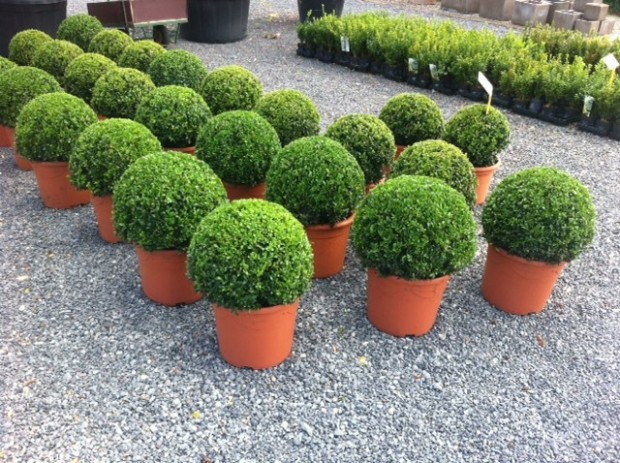
I had so many calls, emails and comments about the topiary nursery in my previous post- wow! I could thank you for that attention, but it wasn’t me who grew those plants. It is a very special person with an extraordinary and singular vision. People with vision-there is always something worthwhile to take from their efforts. His palette of plants is quite spare. His patience with the process I call growing is unlimited. And his ability to prune is superb. These boxwoods of his in 3 gallon pots are plants that have been given a very good start. Any gardener could take this pot home, and resolve to grow that boxwood on.
Another grower we buy from makes a point growing this particular form. These boxwood with tufted top knots are charming and distinctive. Anyone willing to take one on, and commit to growing and pruning would in just a few years have a boxwood topiary worth talking about. To get to this stage, the nursery spends 10 years. They are happy to hand what they grow off to you. Are you game?
Most of my boxwoods are 21 years old. 7 years old at purchase, and 14 years in the ground. I water and feed them. But I would not dream of touching them with a pair of shears. I am a serviceable pruner-not an inspired one. I am fortunate to have someone in my community who makes a specialty of pruning. Mindy and her group of 7 takes an entire day to prune my evergreens. The day they come-the best day of my gardening year.
Gorgeous topiary trees and shrubs are first and foremost about the years, and the good care. The years devoted to growing them on. Transplanting large topiary material comes with no end of peril. Transplant shock is routine. They are very expensive, given how long it has taken to grow them to a subtantial maturity. Once the plant is in place, the work begins.
It was many many years ago that I planted this topiary garden. The first year was no cause to throw a party. But a client with vision was determined to take relatively small plants, and grow them into plants of note. She saw to the water, the feeding, and the pruning. In my zone, in a good year, boxwood flushes on an average of 6 inches. Six inches seems like not much, but 6 inches times 10 years-a big flush. Years later, her plants are gorgeous-gorgeous enough to make any gardener blush.
Mindy prunes with a forest of stout stakes, and a network of level lines. Her group clips with hand shears. I cannot imagine how many times in the course of a day those shears open and close. The sound of that work-I cannot describe in words how beautiful this is. They take the time it takes to do the work properly.
To the last, her crew is entirely modest about their skills. They focus on the plants. Any gardener could make it their business to learn how to do this. Though in my heart I believe she is gifted, I would try to replicate her care, if I needed to. Great topiary plants are about the relationship between the stalwart start of a plant, and a gardener. Buy a plant. Resolve to train it-just how you envision it.
I was young, when I planted this tree. It bore no resemblance to this, the day it went in the ground. It is as grand and gorgeous a topiary carpinus that has ever been my pleasure to see. It is as beautiful as any topiary tree anyone might see anywhere. The form of this tree was many years in the making. The pruning is amazingly precise. The company who prunes this not only has skilled people, it has big equipment. What an extraordinary job they do of the pruning.
Mindy looks after this property. Every hedge is perfectly pruned. The topiary evergreens not shown in this pictuire are in excess of 20 feet tall. Did we move plants in to this landscape, full grown? No. Beautifully grown, hefty specimens got planted. Every year she works on establishing the forms. Every year, they are bigger, and better.
My yew topiaries in these pots are but 3 years old. The boxwood surround is but 3 years old. Given another 10 years, we will have something to talk about. In the meantime, I see to the day to day. I can safely say that the process of growing enriches my gardening life. I like the dailies perhaps more than the finish.
The hedge maples on standard in the back right cewnter side of this landscape-they have been growing on for years. Every year, that pleached hedge of trees looks better. One day they will fill in completely from side to side, and front to back. The land drops from the house to the lake. The trees nearest the water are much taller than the trees on the near side. A lvel pleached hedge on sloping ground-years in the making. The day they fully pass muster-a day to celebrate. Great gestures in the landscape take time.
This beech arbor is but a few years along. It will take another 5 years for it to fill out. My advice to you? Buy two small beech. Plant them opposite each other, far enough apart, where they will be perfect, 15 years from now. Today is the best day to start to grow a topiary. Planting small plants does not mean your vision is small. Planting small plants with an eye to the future-a big vision.
Level with the horizon-is this not beautiful? It took more than a few years to get here. I can attest to that, as this is my yard. Visit your local nursery. Scrutinize what trees and shrubs might grow into something extraordinary, given your care and some time. Take the time to source a great pruning company-or make it your business to learn how to prune. For my clients-I source the best plant material that I can find. I have no trouble placing those extraordinary plants. At the same time, I buy those smaller plants that I imagine, given a few years and a lot of care, will prove to be garden makers. I hold and grow those small plants-waiting for the right and so sparkly client to come along. Those extraordinary large and full grown plants moved to a new home, I love this process. Placing those smaller plants- with such a great future ahead of them-even better.
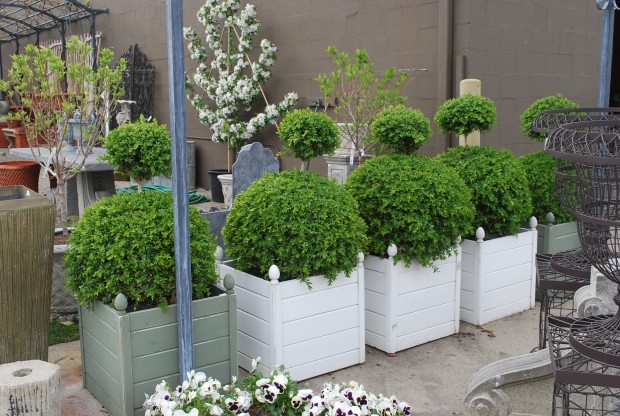
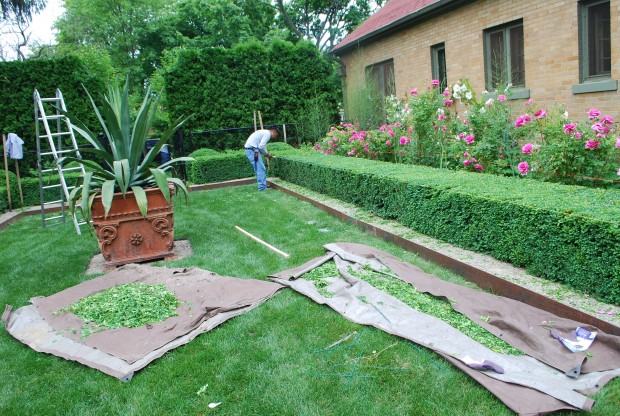
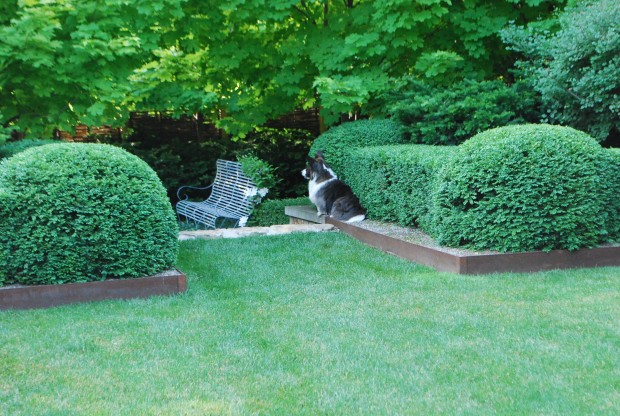
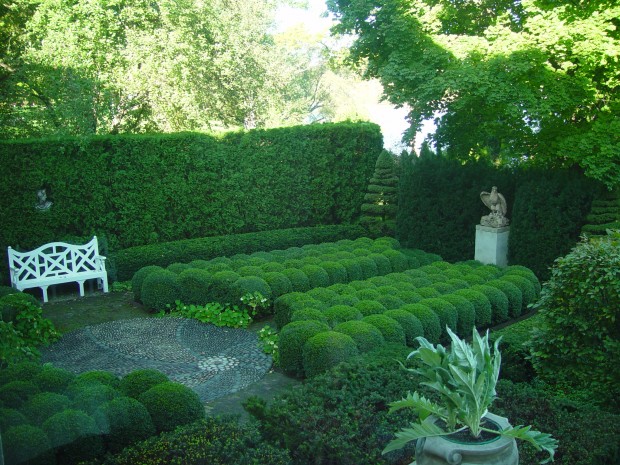

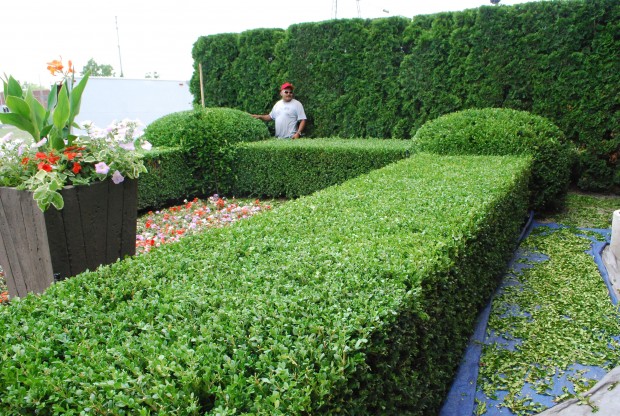
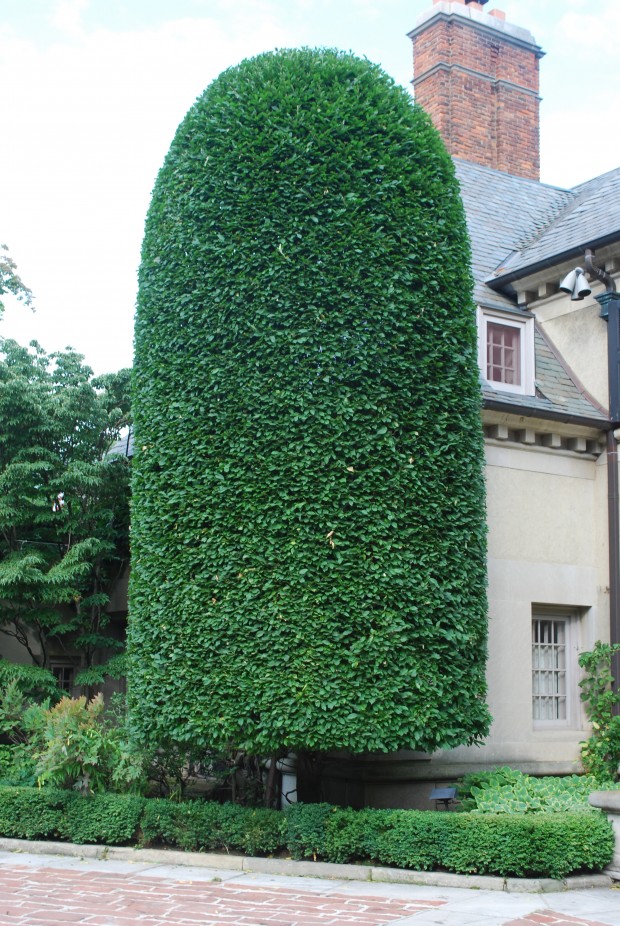
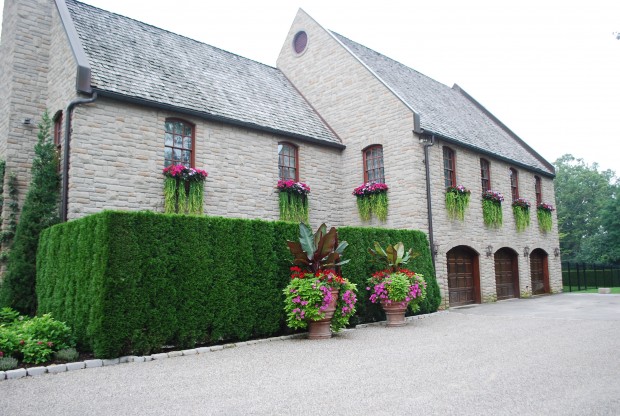
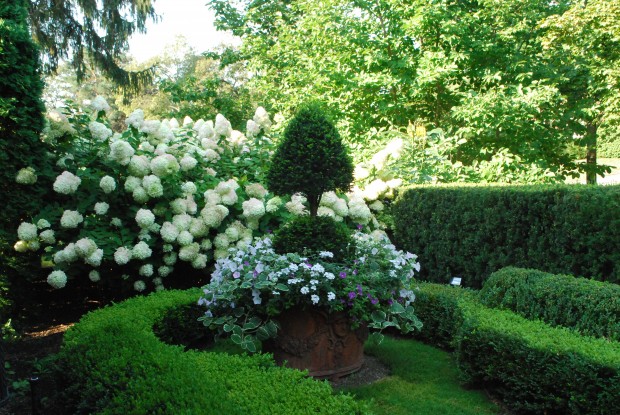
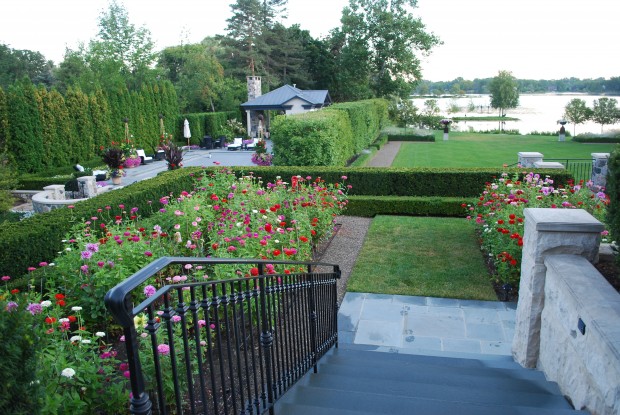
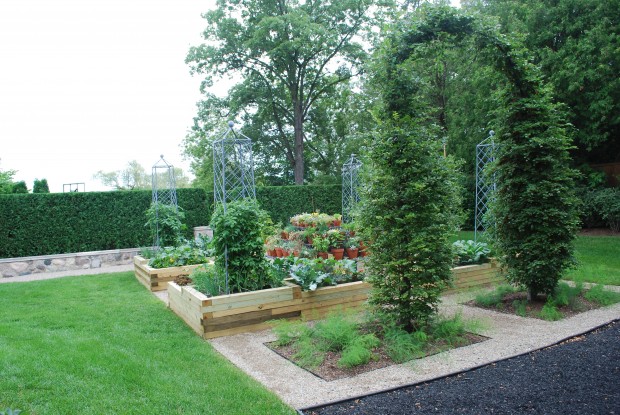
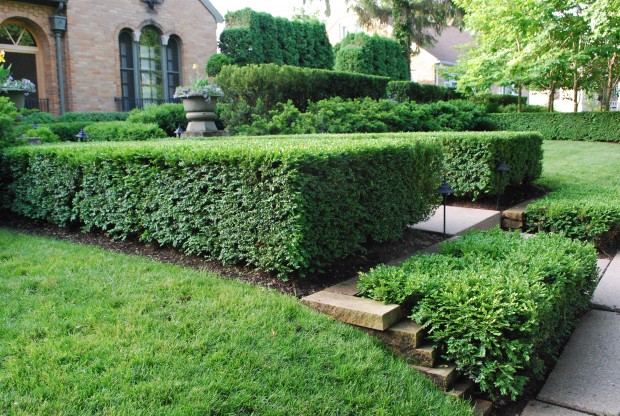
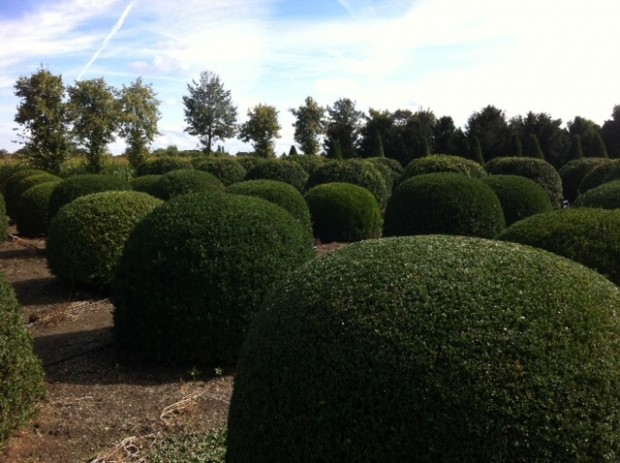
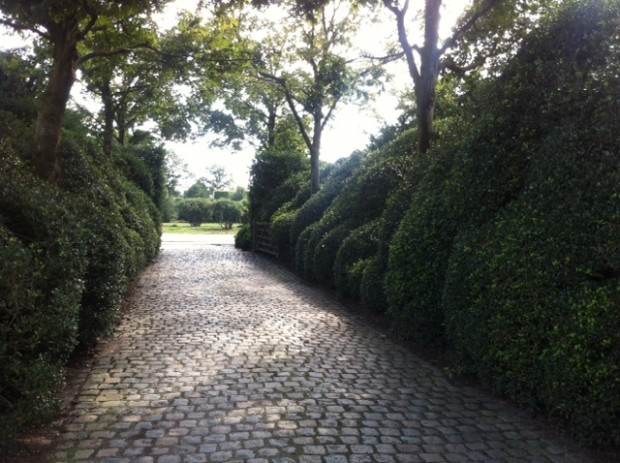
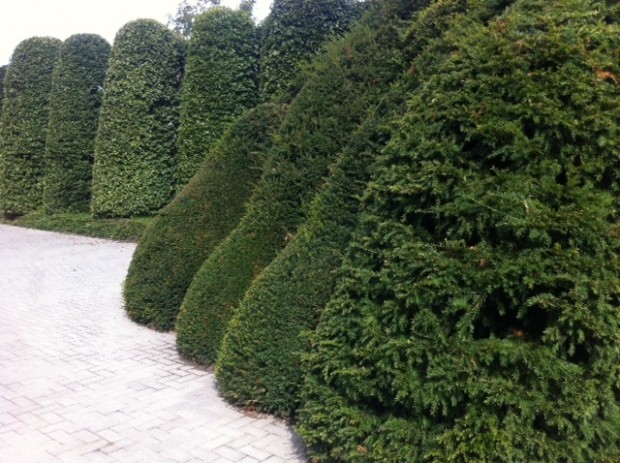
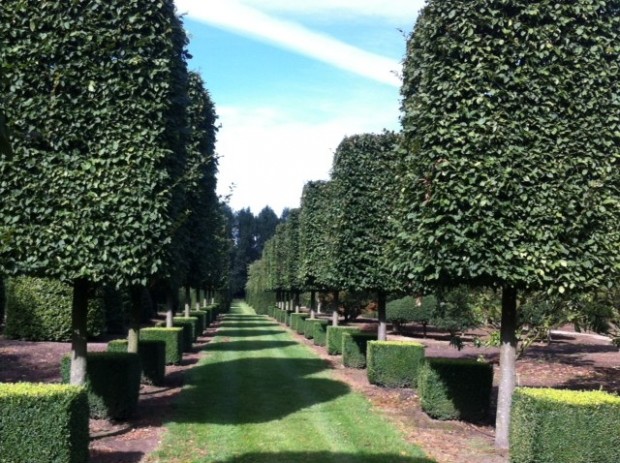
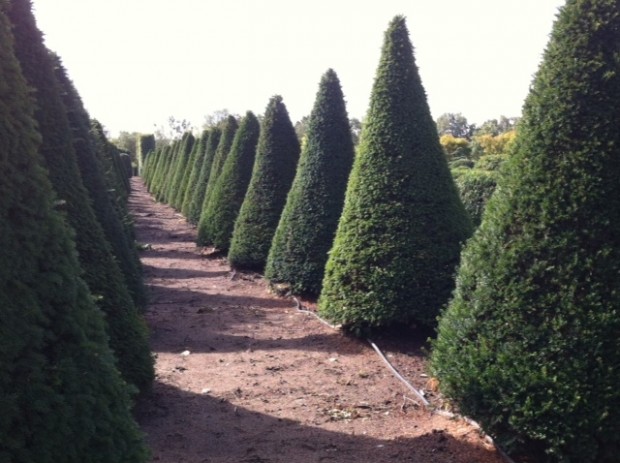
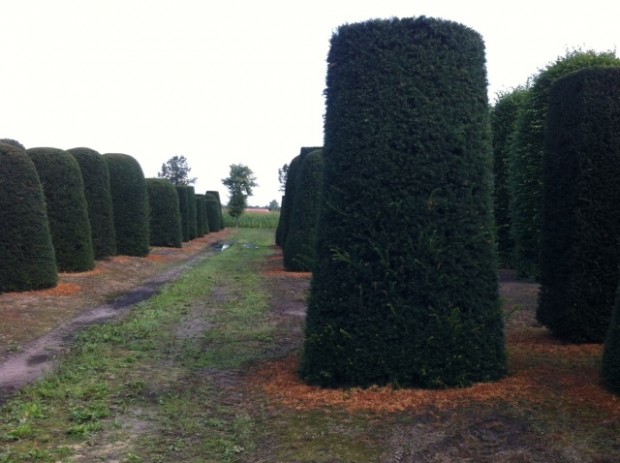
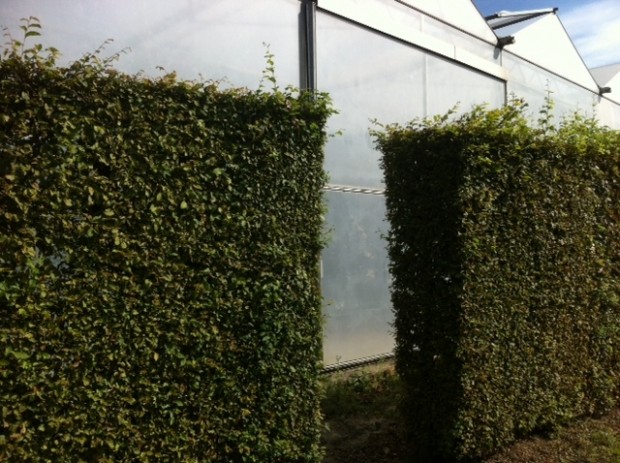
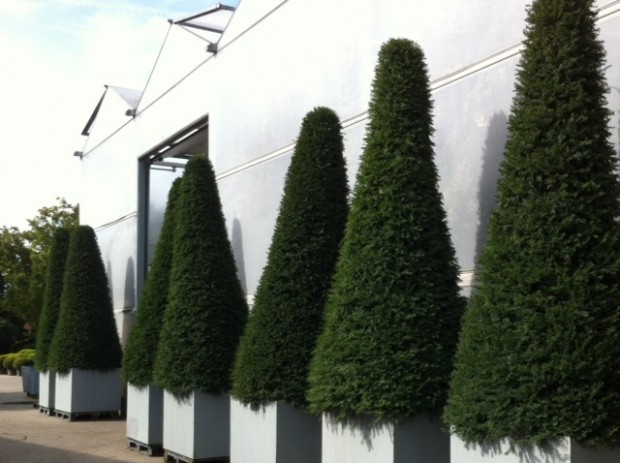
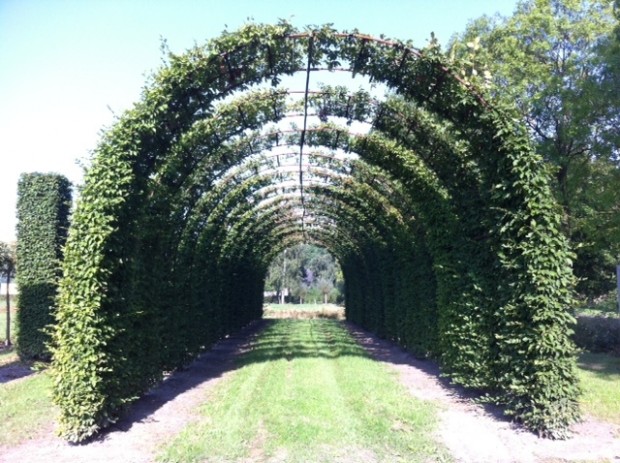
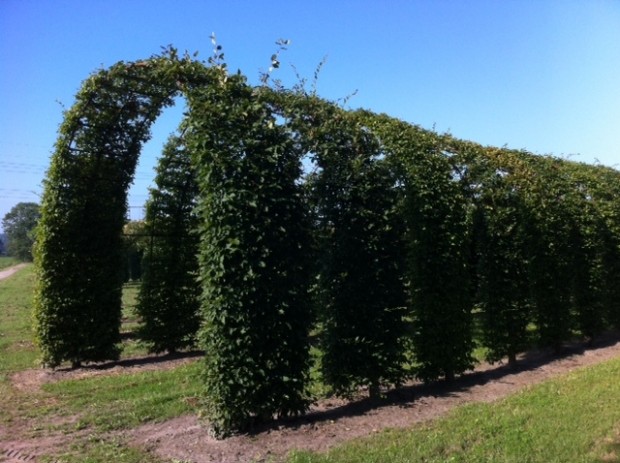
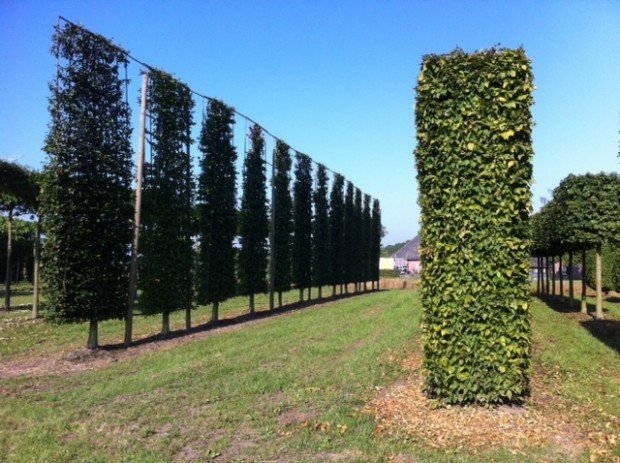
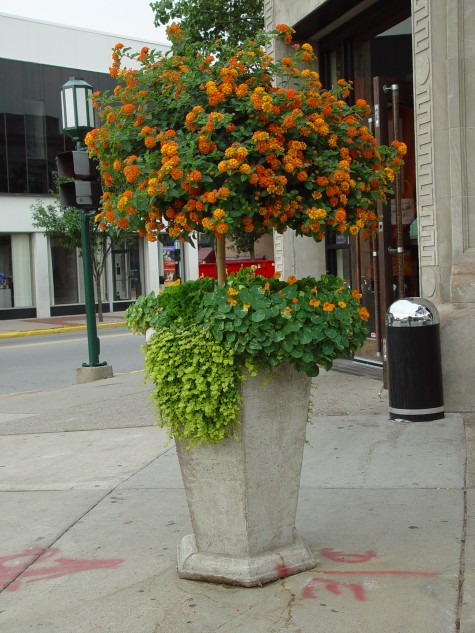 Topiary is the art of pruning, and training a plant to grow in whatever shape you might fancy. Plenty of plant species lend themselves to this kind of treatment. The above pictured lantana is seven years old. It began as a small plant, whose side branches were removed until the primary trunk was about four feet tall. A devoted grower then pinched back the main leader-the first step in the formation of the top. As I like slightly flattened spherical shapes in topiary, we keep the top pruned, and grow the side shoots wide. Lantana flowers profusely in hot weather, it makes a strikingly statuesque topiary plant. In the fall, I cut the head of the plant back by two-thirds,, strip all the remaining leaves off, and stash it in the greenhouse. I strip the leaves off, as lantana is a magnet for whitefly-and they multiply like lightening in a green house environment. What they require is plenty of trouble, but it is glorious in form and flower.
Topiary is the art of pruning, and training a plant to grow in whatever shape you might fancy. Plenty of plant species lend themselves to this kind of treatment. The above pictured lantana is seven years old. It began as a small plant, whose side branches were removed until the primary trunk was about four feet tall. A devoted grower then pinched back the main leader-the first step in the formation of the top. As I like slightly flattened spherical shapes in topiary, we keep the top pruned, and grow the side shoots wide. Lantana flowers profusely in hot weather, it makes a strikingly statuesque topiary plant. In the fall, I cut the head of the plant back by two-thirds,, strip all the remaining leaves off, and stash it in the greenhouse. I strip the leaves off, as lantana is a magnet for whitefly-and they multiply like lightening in a green house environment. What they require is plenty of trouble, but it is glorious in form and flower. 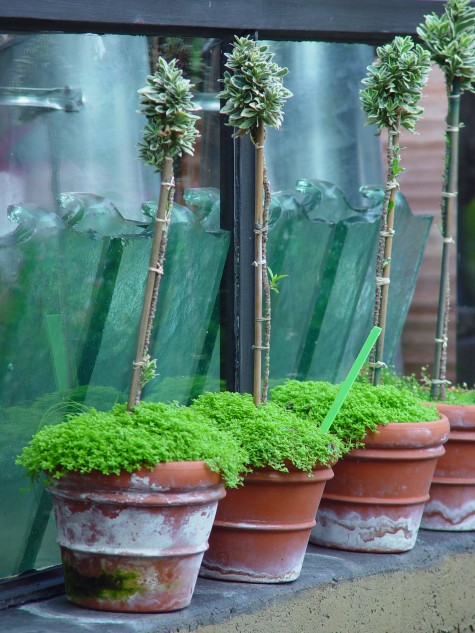 Well grown large topiary plants are expensive. It takes a lot of time to grow them on-sometimes years go by before a plant can be sold. This dwarf variegated euonymus with a batch of leaves atop a stem tells the story. In ten years, this plant will not be much taller-just much stockier, with a full head of leafy branches. As euonymus is a hardy shrub, they like to be wintered in a cool light place.
Well grown large topiary plants are expensive. It takes a lot of time to grow them on-sometimes years go by before a plant can be sold. This dwarf variegated euonymus with a batch of leaves atop a stem tells the story. In ten years, this plant will not be much taller-just much stockier, with a full head of leafy branches. As euonymus is a hardy shrub, they like to be wintered in a cool light place. 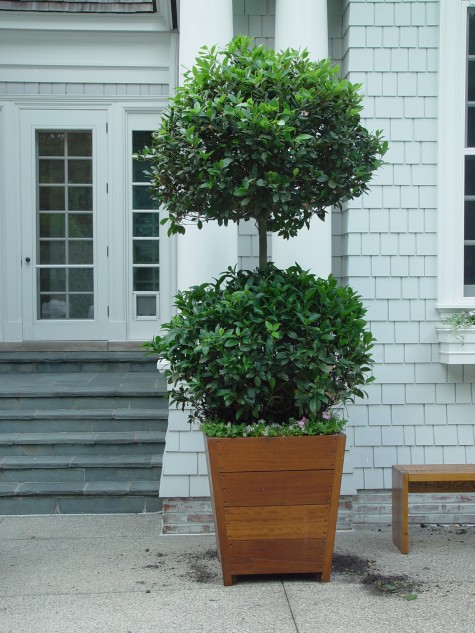 Bay Laurel is not hardy here, unfortunately-so a greenhouse is a necessity in the winter. This plant is 14 years old. This single ball topiary suckered at the base so persistently, I finally just let it grow. The formal shape is easy to keep up; you can see it needs a little haircut right now. There are many kinds of topiary shears available-I like short bladed snips, so I can cut branches without slicing into the leaves. Any leaf that is cut will show that telltale browing on that cut edge within days. �
Bay Laurel is not hardy here, unfortunately-so a greenhouse is a necessity in the winter. This plant is 14 years old. This single ball topiary suckered at the base so persistently, I finally just let it grow. The formal shape is easy to keep up; you can see it needs a little haircut right now. There are many kinds of topiary shears available-I like short bladed snips, so I can cut branches without slicing into the leaves. Any leaf that is cut will show that telltale browing on that cut edge within days. �
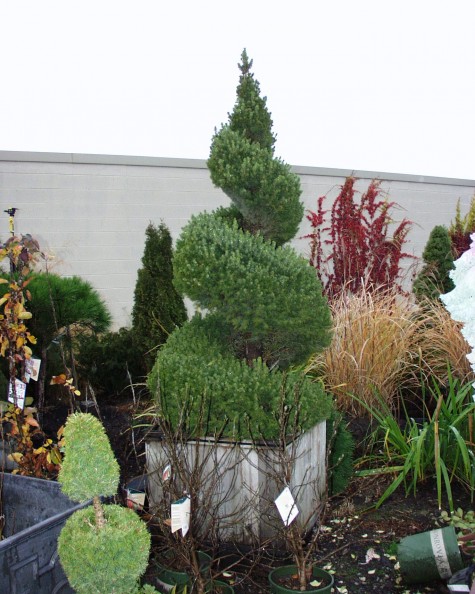

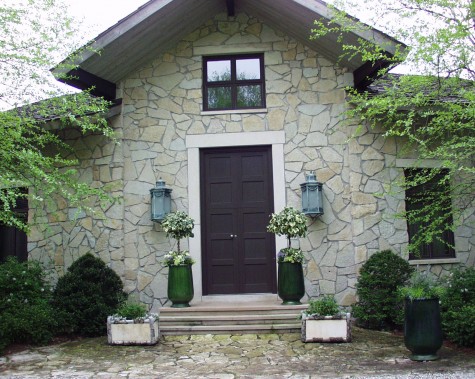 Ivy can be readily be trained over a wire form. This makes it an ideal subject for fast growing. The vines are tied to the form to provide completely coverage, and the vines are clipped as needed. Hedera algeriensis ” Gloire de Marengo”, or variegated Algerian ivy, has large glossy leaves, and a prominent white variegation; old topiaries grown from this plant are striking. A bonus-it is possible to winter ivy topiaries over in the house.
Ivy can be readily be trained over a wire form. This makes it an ideal subject for fast growing. The vines are tied to the form to provide completely coverage, and the vines are clipped as needed. Hedera algeriensis ” Gloire de Marengo”, or variegated Algerian ivy, has large glossy leaves, and a prominent white variegation; old topiaries grown from this plant are striking. A bonus-it is possible to winter ivy topiaries over in the house.  The coleus topiary I let go after two seasons-they seem to loose vigor. The minute you decide to grow a plant in any form which is not its natural form, there will be maintenance problems down the road. Plants tolerate being fooled with by people-they rarely love it. Plants that naturally lend themselves to this treatment are easier to look after.
The coleus topiary I let go after two seasons-they seem to loose vigor. The minute you decide to grow a plant in any form which is not its natural form, there will be maintenance problems down the road. Plants tolerate being fooled with by people-they rarely love it. Plants that naturally lend themselves to this treatment are easier to look after.